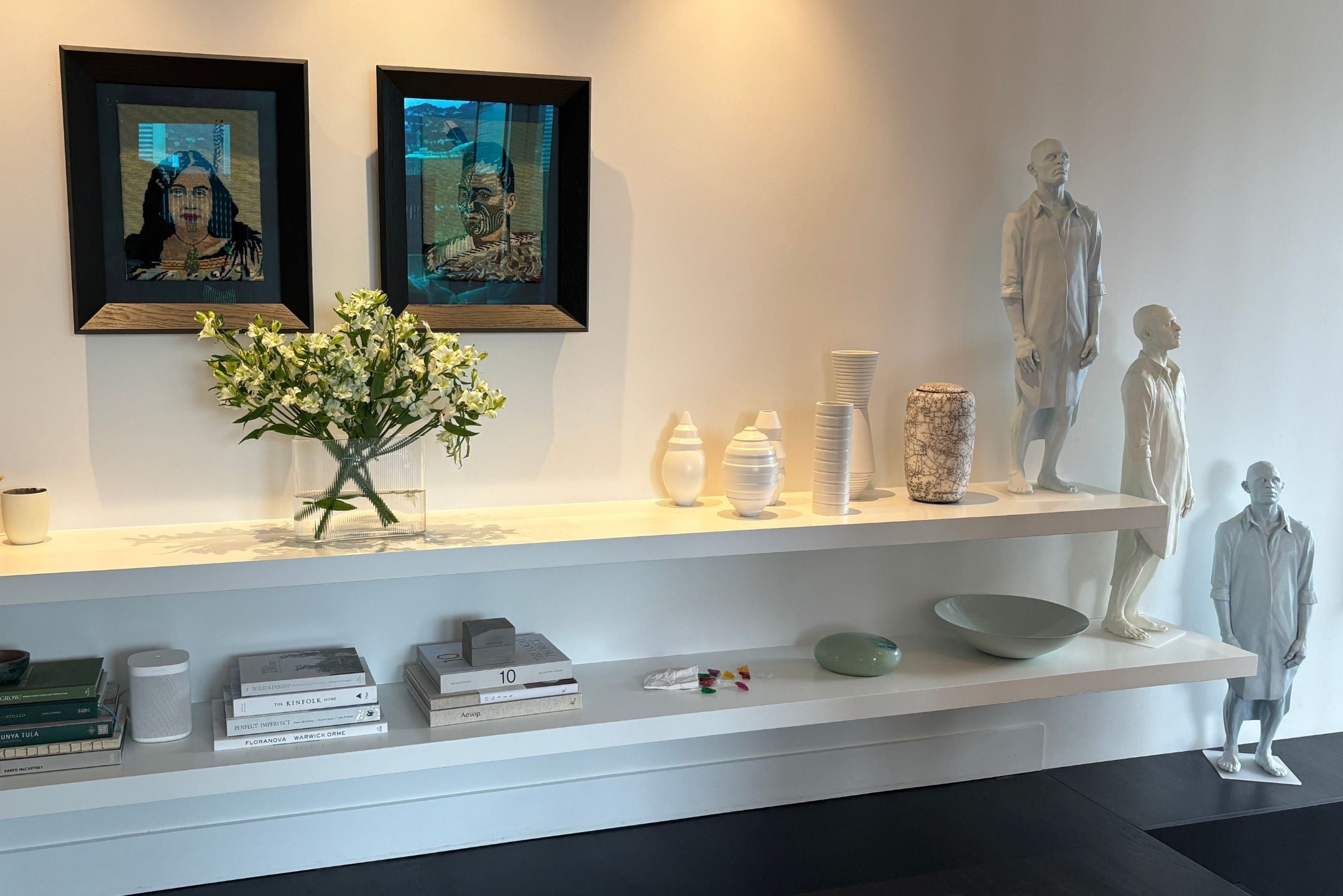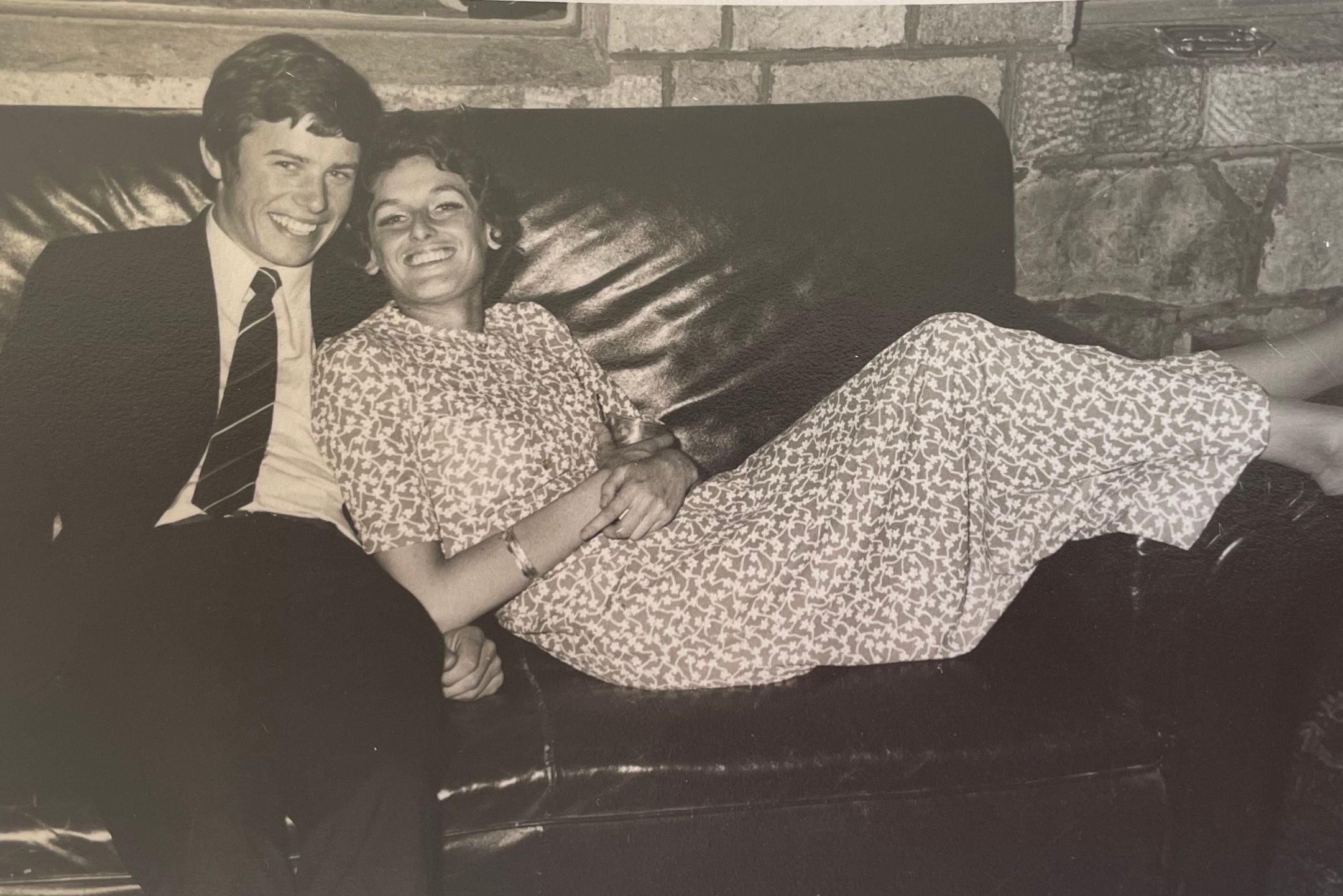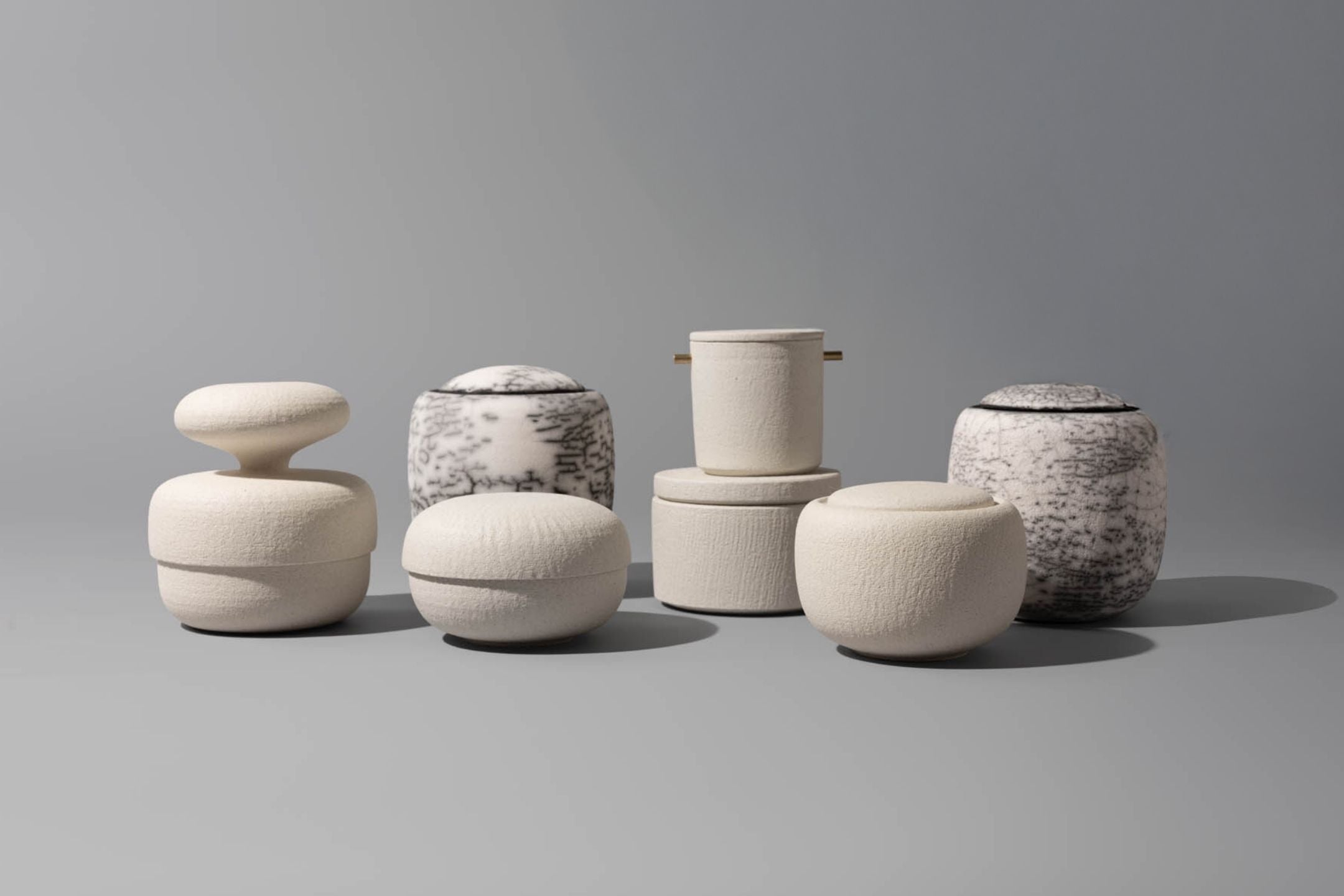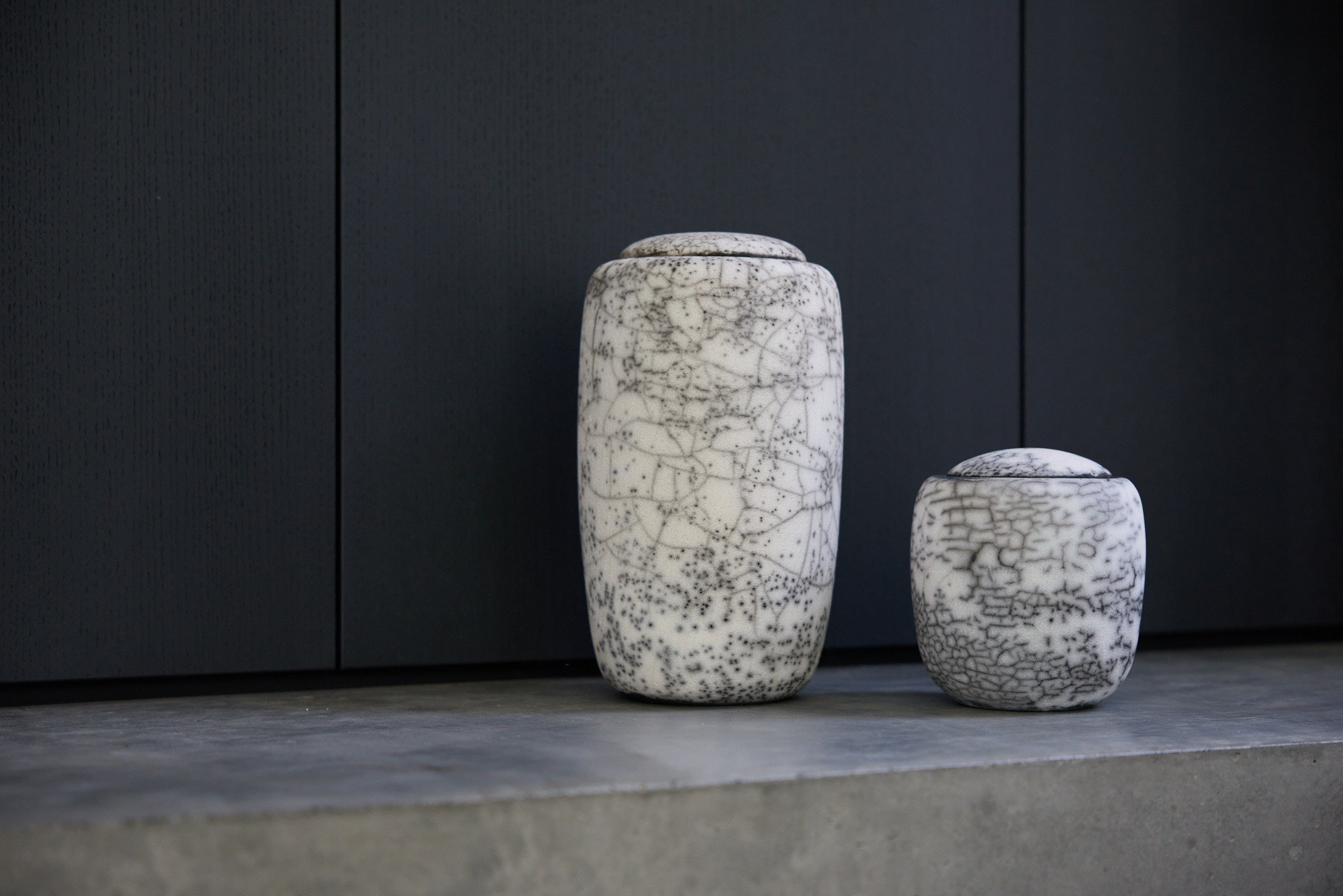Why art matters in death

I’ve always been in awe of anyone who could bring to life an image that lived solely inside their mind. The way a sculptor or painter could take something ethereal and intangible and make it concrete and 3 dimensional so it was tangible and entrancing. I’m no expert, but for me the most pleasing art - be it painting, sculpture, tapestry, photography or performance - makes me stare intently and really FEEL it’s energy. In our home, I mostly want that to be a warm, vibrant energy that makes me smile as I walk by, or suddenly dance or sit and contemplate. But, I’m also hugely drawn to art that pushes my sensibilities and challenges me to see the world through different eyes even if I don’t necessarily like what I see. For me, that’s the magic of art and artists - they allow us to see what we cannot, to embrace the different and the uncomfortable, and to maybe come out of the experience transformed a little.
My mother started this fascination with art. And yes, I am totally in awe of her and the subtle and not so subtle ways she opened our eyes to different realms and taught us to see. I have to admit, this is only really just dawning on me now in my fifties as I think hard about the ways I have, and am still, influencing my own children - good and bad.
Bar’s love of art - be it designing and tending her garden, the paintings she chose to adorn our walls, the pottery she collected from her favourite Nelson potters or the music she constantly had playing loudly on our stereo - has infused much of the way I see the world - and so much of what, for me, makes a home. All that and a large, busy kitchen full of noise and luscious smells.
And it’s this melding of art and life that made it so important to me that Bar should ultimately rest in something beautiful - something artful and eternally stylish. I truly believe she would’ve wanted that. And what’s more, I have this, possibly ridiculous, notion that if she’s here with me in my home in something gorgeous, her spirit and energy will shine through and I’ll FEEL her with me - slightly crazy, I know.
The tricky thing is, in moments of intense grief, you’re so overwhelmed by loss, that it’s really hard to make decisions about even the most minor things. It’s much easier to succumb to whatever’s right in front of you or to fall back on tradition. And that’s what happened when Bar died. I found myself paralysed and unable to make even the simplest decisions - like what we should have for dinner or whether I wanted to walk or drive home from the hospital, let alone what sort of vessel she might eternally rest in.
When it came to what to do with Bar once she’d died, we were also at a bit of a loss. As a family we hadn’t talked about it. But she came from a large, devout catholic family so there was some expectation that we’d have a funeral in a catholic church and she’d be buried next to her parents in Christchurch or in Akaroa, the family holiday spot. It wasn’t an explicit expectation - more something hovering around us - and all despite the fact that our particular little nuclear family, including Bar, were devout non-believers and highly critical of the catholic church. Sitting around her bed in those last few days, with her present but unable to participate, we were forced to think about what she might have wanted - and we all agreed it wasn’t the traditional church and burial.
We opted for a small, private cremation service followed a week later by a vibrant celebration of her life with friends and family. It was amazing. People came from all over New Zealand, Australia and further afield to honour and celebrate this wonderful woman. There were heartfelt words, funny anecdotes, beautiful poems and loads of shared memories. And then there was a party, which ended with our crazy wider family drinking well into the night - utterly hilarious and exactly as Bar would’ve wanted.
All this time, Bar was in the ugliest of ugly green plastic containers that the funeral director had chosen because we couldn’t decide on anything else.
I tried so hard to find her something beautiful to rest in but it was almost impossible. So in that moment of paralysing grief (which lasted for some time, to be fair) we gave in to the green plastic container and let it be. And Bar rested there for over a year while Vaso was incubating.
This isn’t an isolated story. The number of people who have told me they had loved ones in cardboard boxes or the same plastic container the funeral home had given them years ago was crazy! Many of the things were so unsightly, they’d been hidden away in wardrobe cupboards or crowded bookcase shelves - definitely not forgotten, but not exactly celebrated either.
I really felt there might be a nexus between art and the everyday remembering of someone who’s gone, much like the ‘great families’ who had portraits of their elders painted for centuries. Throughout time, we’ve memorialised people with ornately carved headstones and burial tombs, mostly set in remote graveyards and cemeteries far from our homes. And, of course, we’ve been cremating people for centuries as well, often scattering ashes to the winds or seas or storing them in either inconspicuous or garishly decorated jars.
I wondered how we might commemorate death in a more personal, intimate and modern way. What if we created beautiful, sculptural works of art that could sit comfortably inside our homes and be admired every day? And Vaso was born.
I wasn’t quite sure which of our Vaso urns Bar would end up in. Throughout the design and development process a few shone through as front runners - the voluptuous G Series with its people like curves and beautiful organic form; and the simple, yet elegant R series with its almost volcanic like raku patterning and surprising uniqueness.
After much contemplation, I’ve chosen a beautiful Raku cremation urn for Bar’s ashes. My ‘Bar’ sits on a shelf in our library hallway which we all walk past multiple times a day. She’s nestled between John Parker ceramics and Max Patte sculptures, which I know would make her very happy. It’s also at one end of my work space so not only do I get to walk past and physically reach out and touch her on my way down to the kitchen, I can also sit at my desk and think about her in my more contemplative moments. What’s more I FEEL her here with me and I know she’s quietly smiling, very happy with her beautiful black and white home, cherished and safe, but also present and part of family life.
And that’s what I want for other people too. I want them to smile every time they glimpse their beautiful Vaso vessel and think of that special person (or beloved pet) with warmth and fondness. I want them to embrace it as a work of art and cherish the fact that their loved one has an eternal resting place that’s worthy of display and happily takes pride of place in their home. And I want them to FEEL their presence and be, if not eternally inspired, then at least happy knowing their loved one is still with them.
Bridgit
Vaso founder




